Von Wong’s giant ‘Skull of Satoshi’ aims to expose Bitcoin’s dangers
Benjamin Von Wong, acclaimed photographer, multimedia artist and activist, built an 11-foot-tall skull, the “Skull of Satoshi,” covered in electronic waste (e-waste) to “reveal Bitcoin’s impact on climate change.”
While everything people do online uses energy, Bitcoin mining and transactions are particularly energy-intensive activities. Researchers at the University of New Mexico found that Bitcoin’s environmental footprint is similar to the extraction and refining of crude oil.
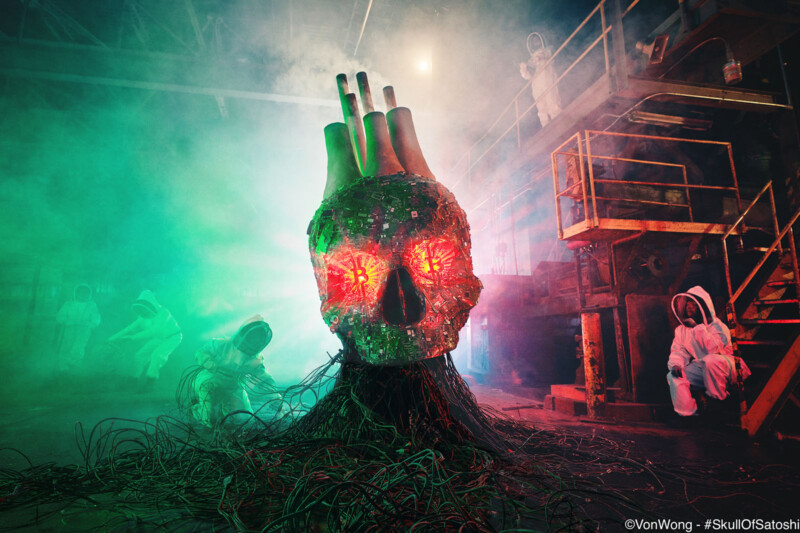
Von Wong notes that while a single Google search uses approximately 1,080 joules of energy, just one Bitcoin transaction uses a catastrophic 6,995,000,000 joules. That’s almost 6.5 million times more energy than Googling something and almost 24,300 times more energy than streaming an hour of Netflix.

Bitcoin’s energy problem is significant. However, it is not an unsolvable problem, claims Von Wong. Software changes can immediately clean up Bitcoin.
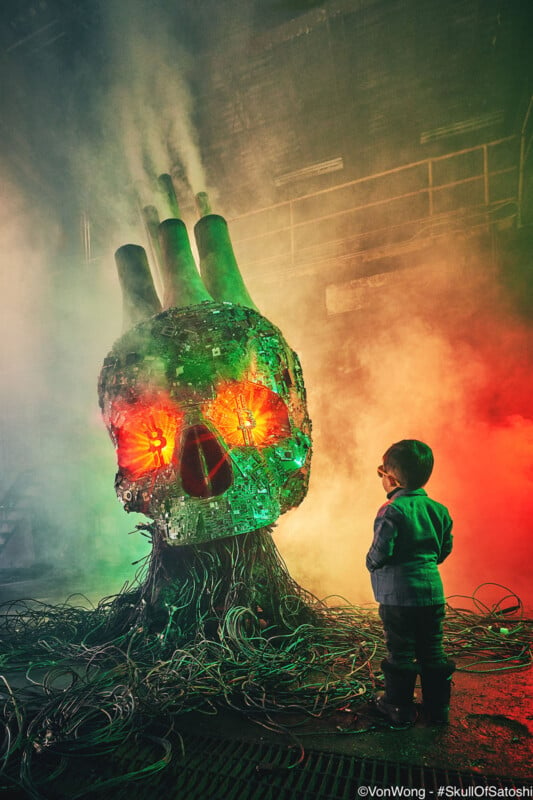
However, many people do not fully understand Bitcoin, and even those who use Bitcoin may not be aware of the damage it causes and how it affects climate change. Von Wong’s latest project is designed to bring attention to the problem. He has regularly used stunning art and photography to raise awareness of social and environmental issues. Last year, one of Von Wong’s photos became the symbol of the UN’s global plastic agreement. It wasn’t Von Wong’s first attempt to raise awareness of the harmful effects of plastic and pollution. In 2016, he created a fantastic image of a mermaid that had been stranded by plastic bottles.
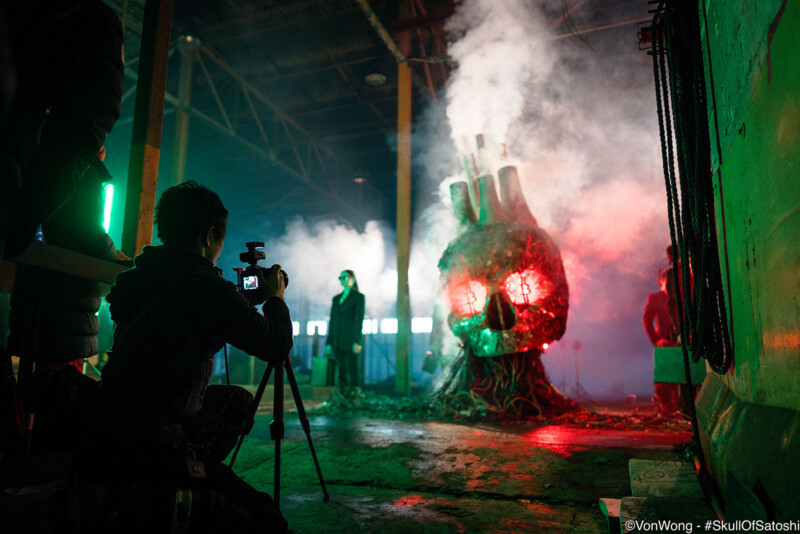
Von Wong’s fight against e-waste is yet another example of the photographer’s ambitious ideas, passion and excellent execution. Bitcoin uses about twice as much energy as Amazon, Google, Microsoft, Facebook and Apple combined. The energy demand for Bitcoin has increased by 100 times in the last five years.

The giant skull at the center of Von Wong’s new image was built from wood, recycled Styrofoam and over 300 pieces of electronic waste. Von Wong worked with a mechanical engineer, Jeremy, and producers Elana and Joel. The e-waste they used came courtesy of the non-profit organization Unirecycle.
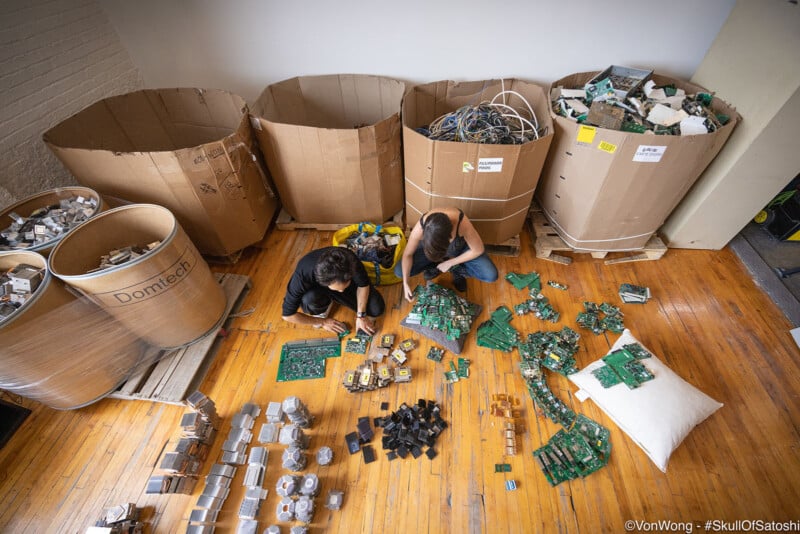
Bitcoin mining generates more than 30,000 tons of e-waste annually, so Von Wong wanted to cover the piece in circuit boards. It was a monumental task, as the team needed to manually sort, organize and fit each part of the skull.
The “Skull of Satoshi” took about 1,000 hours of work and was brought to life in an abandoned warehouse. The building, used with the permission of a demolition company hired to dismantle the structure, gives the images a dystopian, gruesome feel. Long tube lights give a cyberpunk feel to the images.

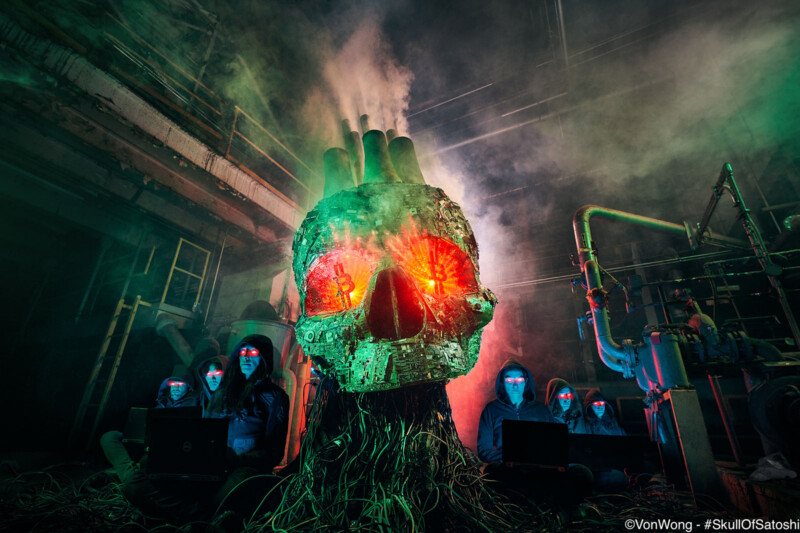
Von Wong included models in suits in the work because these are the people he hopes to reach. Institutional and financial investors support Bitcoin at the expense of the climate. The skull’s eyes feature red lasers as an allusion to the “laser eye” profile pictures used by some Bitcoin followers. Von Wong even created laser eyes for his volunteer models to use using red fairy lights.
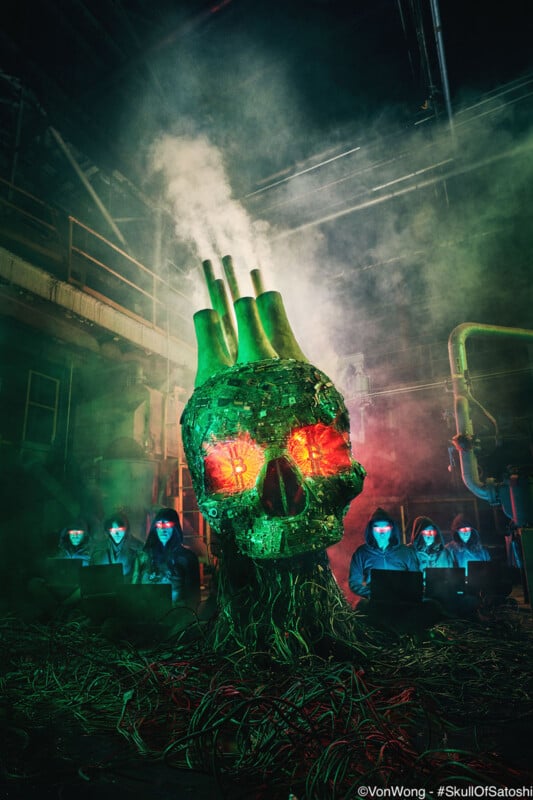
Over the next few months, the giant ‘Skull of Satoshi’ will travel as part of the campaign for sustainable Bitcoin as Greenpeace takes it on tour. Many people were involved in the campaign and a full list of credits is available on Benjamin Von Wong’s blog.
Image credit: Benjamin Von Wong.


